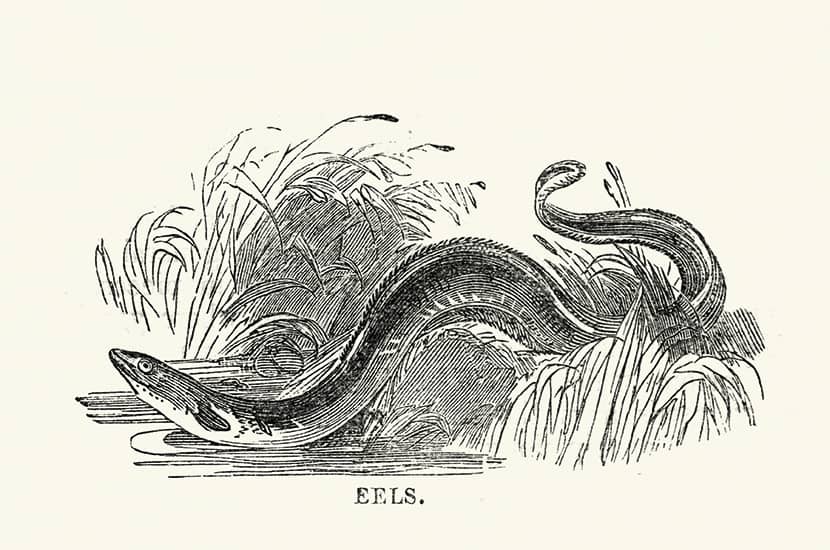The migration of European eels is one of the miracles of nature. They start life in the great deeps of the Sargasso sea in the north-west of the Atlantic ocean as tiny, flat creatures, like almost transparent willow leaves, which drift 3,700 miles on the Gulf Stream to Britain and mainland Europe. The journey can take more than three years. When they approach Europe they make their first metamorphosis into ‘glass eels’: thin rods, shorter than a finger, which are also virtually transparent. These in turn have their own metamorphosis into elvers, which are essentially tiny eels. They swim upstream, close to the bank to avoid the river’s current, and slowly change into ‘yellow eels’. At this point they distribute themselves into streams and ponds, lakes and meres — anywhere where there is water. Here they will stay for anything between ten and 30 years, slowly putting on weight as they feed on worms, insects and other fish, dead and alive.
After staying put for decades, suddenly, around the time of a harvest moon, the eel carries out its final metamorphosis. Its skin becomes thicker and its eyes larger and bluer in readiness for the depths of the sea. Its yellowish-brown colour disappears, its back turns black and its sides turn -silver. Then, wherever it is — lake, ditch, pond or stream — it makes its way to the nearest main river by the fastest possible means. This can even entail wriggling across country; eels can survive out of water for three to four hours. Its stomach dissolves, for it will feed no more during its last journey, which may take six months to a year. Eventually, it returns to the Sargasso — so-called because of its floating weed, sargassum — where the eel will mate, spawn and die.
For centuries the eel was the most prolific freshwater fish in British waters. It fed the poor, and the jellied eels of the East End of London were world-famous. Today, it is on the endangered list. Since the 1970s numbers have declined by 97 per cent. There are several reasons for this. One is the huge illegal trade in glass eels,which are a delicacy in the East: a man was convicted last year after being caught at Heathrow with 400lb of glass eels which he would have sold to China for £2,000 a pound. The electric turbines in our weirs have also cut tens of thousands of eels to ribbons over the years — although, thankfully, eel ladders have now been built. However, the greatest cause of the decline is a parasite, Anguillicoloides crassus, which appeared when the Japanese tried to farm eels and quickly spread everywhere. It affects the swim bladder, which regulates the depth at which eels swim. During the day they use the depths to avoid predators but they swim far shallower at night. Without the guidance of their swim bladder, they sink to the bottom and die.
Each September I used to lay fyke nets in a friend’s lake, which was fed by the Avon and was full of eels. I let the nets hang for a week and when I lifted them I usually had upwards of 150 eels squirming in them. I used to release nearly all of them but kept 20 of the biggest, which I smoked and gave to friends at Christmas. I stopped ten years ago when the nets became almost empty.






Comments